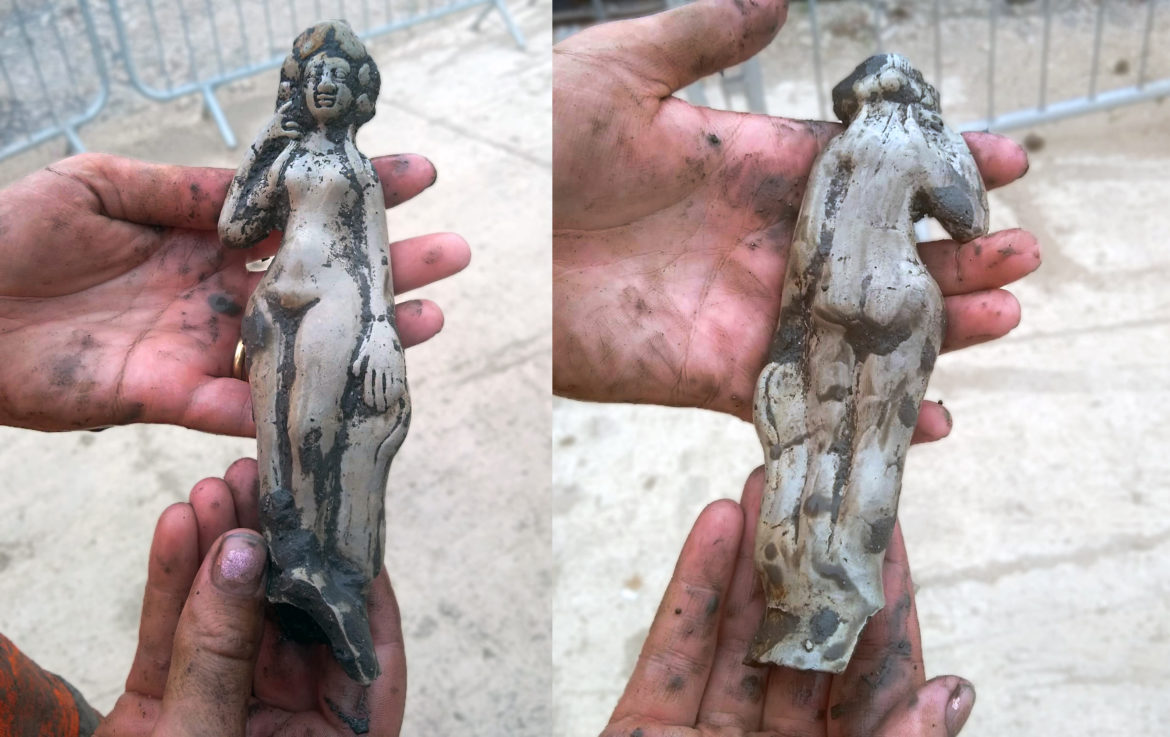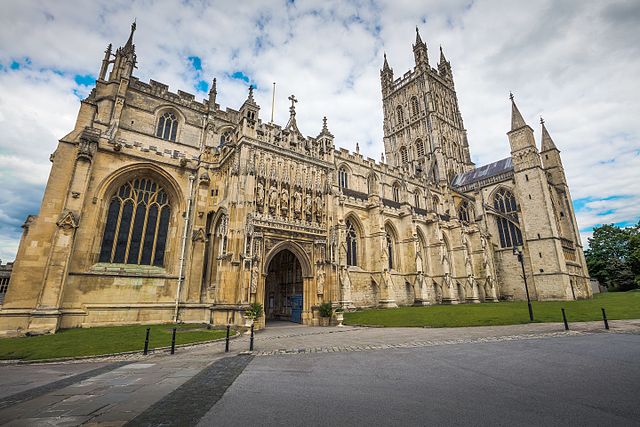GLOUCESTERSHIRE, England – A few weeks ago, TWH covered a Roman-era statue of Venus that was found in England. The Roman history of Britain is indeed extensive: the author of this article comes from an original Roman town, Glevum – now Gloucester – a retirement settlement for legionnaires. (My school was built on the site of a Roman cemetery and was supposed to be haunted by the ghost of a Roman soldier – I never glimpsed him, unfortunately).
Roads such as the A37 in the West Country and the A1 in the north follow the path of Roman roads: the Fosse Way and Ermine Street respectively. The ruins of Roman villas such as Chedworth are a familiar sight to Britain’s schoolchildren, taken on trips to see the archaeological remains, and pagans, too, may take an interest in gods such as Mars and Sulis, whom the legions brought with them.

Venus Statue via Cotswold Archaeology [via Twitter]
“The Romans carried on their practice of adoption and syncretisation to the extent of building either temples or at least plinths inside temples, dedicated to local gods. There are several temples on Hadrian’s wall which have dedications to local deities such as Antenociticus. On the frontiers, it looks as though they were accommodating locals by giving them somewhere to worship.” (Trevor Jones, Druid).
It is not surprising, therefore, that Roman finds continue to be unearthed in the UK. In October, the press reported on Roman statues found during an excavation ahead of the country’s new high-speed rail link, HS2. The dig has been conducted by the engineering firm Fusion JV and commercial archaeological service L-P Archaeology on the site of St Mary’s church in Stoke Mandeville in Buckinghamshire. Archaeologists have found statues of a man and a woman, and a child’s head, which they describe as ‘astounding.’ It is believed that these statues stood in a mausoleum, and adds some weight to the theory (not as well supported by the evidence as many believe) that old churches are built on older pagan edifices. It is believed, for example, that the Roman mausoleum may have replaced an earlier Bronze Age burial ground.
The church itself, which is Anglo Saxon, was built in 1080 AD but was demolished in 1966, having been abandoned in the late 19th century after 900 years of use (a new church was built nearby and it sounds as if the old building was becoming unstable since a child was killed here by falling masonry in the 1930s). The site has yielded a number of discoveries, therefore, from ancient times to more recent days: Medieval graffiti on its stones, for instance, suggest the presence of witchmarks.
It is possible that the statues contained in the mausoleum were shattered when the church was constructed since the heads have been separated from their torsos. This is not the first time this year that the site has been in the news since around 3000 bodies were due to be removed from the cemetery and taken to a new burial site with a specially designed monument.
Lead archaeologist Rachel Wood says of the statues:
“For us to end the dig with these utterly astounding finds is beyond exciting. The statues are exceptionally well preserved, and you really get an impression of the people they depict—literally looking into the faces of the past is a unique experience. This has truly been a once in a lifetime site, and we are all looking forward to hearing what more the specialists can tell us about these incredible statues and the history of the site before the construction of the Norman church.”

Gloucester Cathedral [Photo Credit: Michael D Beckwith Creative Commons Zero, Public Domain Dedication]
Wood has also speculated as to what might be found under other old churches across the country. We do not know who the busts represent – they will portray wealthy, influential individuals rather than gods or goddesses, but it may well be that the site might hold further indications of who the inhabitants of the mausoleum represented. Sadly, the dig has now closed, bearing out the old archaeological maxim that the best finds are always made on the last day!
Meanwhile more Roman finds have also been made at Richborough Roman Amphitheatre in Kent: a holding cell for people, such as gladiators, or animals about to enter the arena. These include the skeleton of a cat, deliberately buried just outside the amphitheatre, whom archaeologists have named Maxipus. Cats were sometimes interred in the walls of houses at a much later date in Medieval times, apparently to ward off negative influences, and it is interesting to speculate whether this is a holdover from an old Roman custom. However, it may simply be that Maxipus was someone’s pet!
The cell, known as a ‘carcer,’ has been discovered recently but the amphitheatre itself was revealed in 1849. It was probably constructed in the 1st century AD, part of a larger settlement: the amphitheater is estimated to have been able to seat around 5000 people and was close to Richborough fort, a significant Roman settlement in the southeast of the country, dating from the Roman invasion in AD43 to the end of occupation in about 410.
English Heritage senior properties historian, Paul Pattison, has told the BBC:
“We’ve always known the Roman fort at Richborough was an important place to the Romans, until the very end of their rule, and now we have been able to gather evidence that much of the town outside the fort may also have been settled until the very end.”
Previous finds in Leicester have suggested that the Roman practice of damnatio ad bestias – throwing criminals to wild animals – may have been practiced in Britain and there is some evidence that lions may have featured in amphitheatres. Perhaps the recently discovered carcer may have been an entrance for a lion?
The Wild Hunt is not responsible for links to external content.
To join a conversation on this post:
Visit our The Wild Hunt subreddit! Point your favorite browser to https://www.reddit.com/r/The_Wild_Hunt_News/, then click “JOIN”. Make sure to click the bell, too, to be notified of new articles posted to our subreddit.
